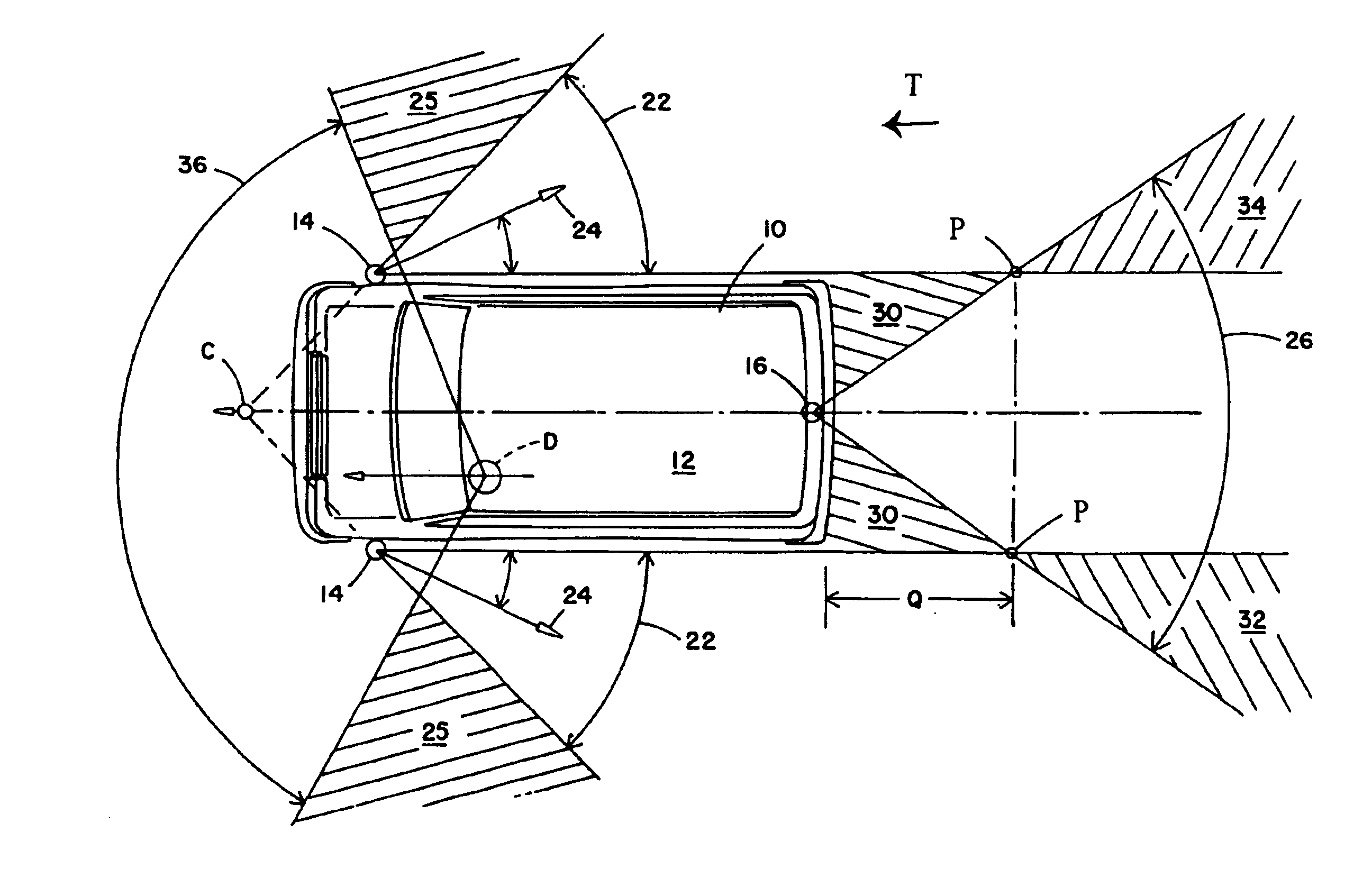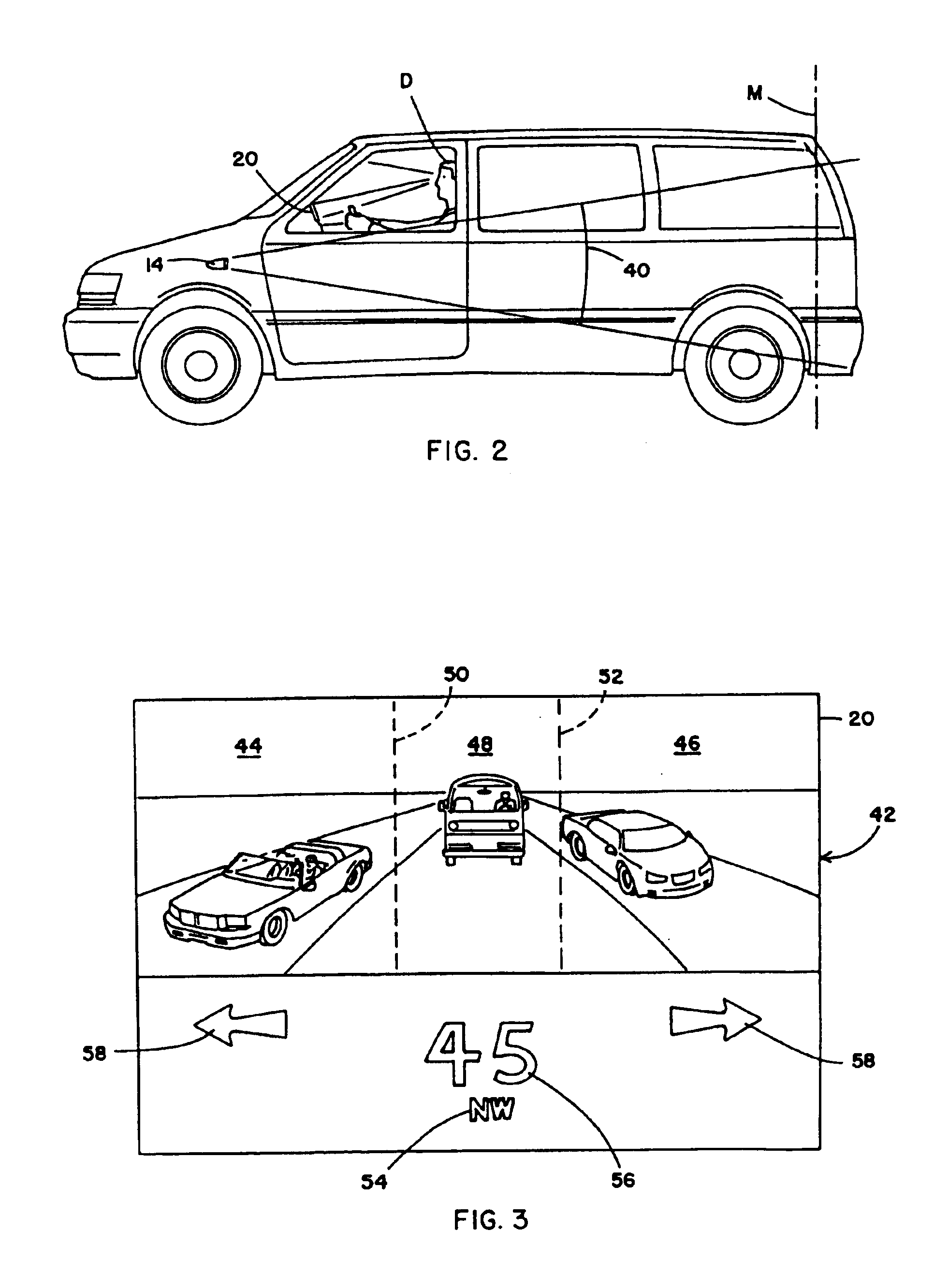Vehicular vision system
a vision system and vehicle technology, applied in the field of rearview vision systems, can solve the problems of driver inability to perceive vehicles, objects, other road users, and difficulty in maneuvering in tight spaces, and achieve the effect of enhancing the interpretation of visual information
- Summary
- Abstract
- Description
- Claims
- Application Information
AI Technical Summary
Benefits of technology
Problems solved by technology
Method used
Image
Examples
Embodiment Construction
[0044]Referring now specifically to the drawings, and the illustrative embodiments depicted therein, a vehicle 10, which may be an automobile, a light truck, a sport utility vehicle, a van, a bus, a large truck, or the like includes a rearview vision system, generally illustrated at 12, for providing a driver of the vehicle with a view rearwardly of the vehicle with respect to the direction of travel T of the vehicle (FIG. 1). Vision system 12 includes at least two side image capture devices 14 positioned, respectively, on opposite sides of vehicle 10 and a center image capture device 16 positioned on the lateral centerline of the vehicle. All of the image capture devices are directed generally rearwardly of the vehicle. Rearview vision system 12 additionally includes an image processor 18 for receiving data signals from image capture devices 14, 16 and synthesizing, from the data signals, a composite image 42 which is displayed on a display 20.
[0045]As will be set forth in more det...
PUM
 Login to View More
Login to View More Abstract
Description
Claims
Application Information
 Login to View More
Login to View More - R&D
- Intellectual Property
- Life Sciences
- Materials
- Tech Scout
- Unparalleled Data Quality
- Higher Quality Content
- 60% Fewer Hallucinations
Browse by: Latest US Patents, China's latest patents, Technical Efficacy Thesaurus, Application Domain, Technology Topic, Popular Technical Reports.
© 2025 PatSnap. All rights reserved.Legal|Privacy policy|Modern Slavery Act Transparency Statement|Sitemap|About US| Contact US: help@patsnap.com



